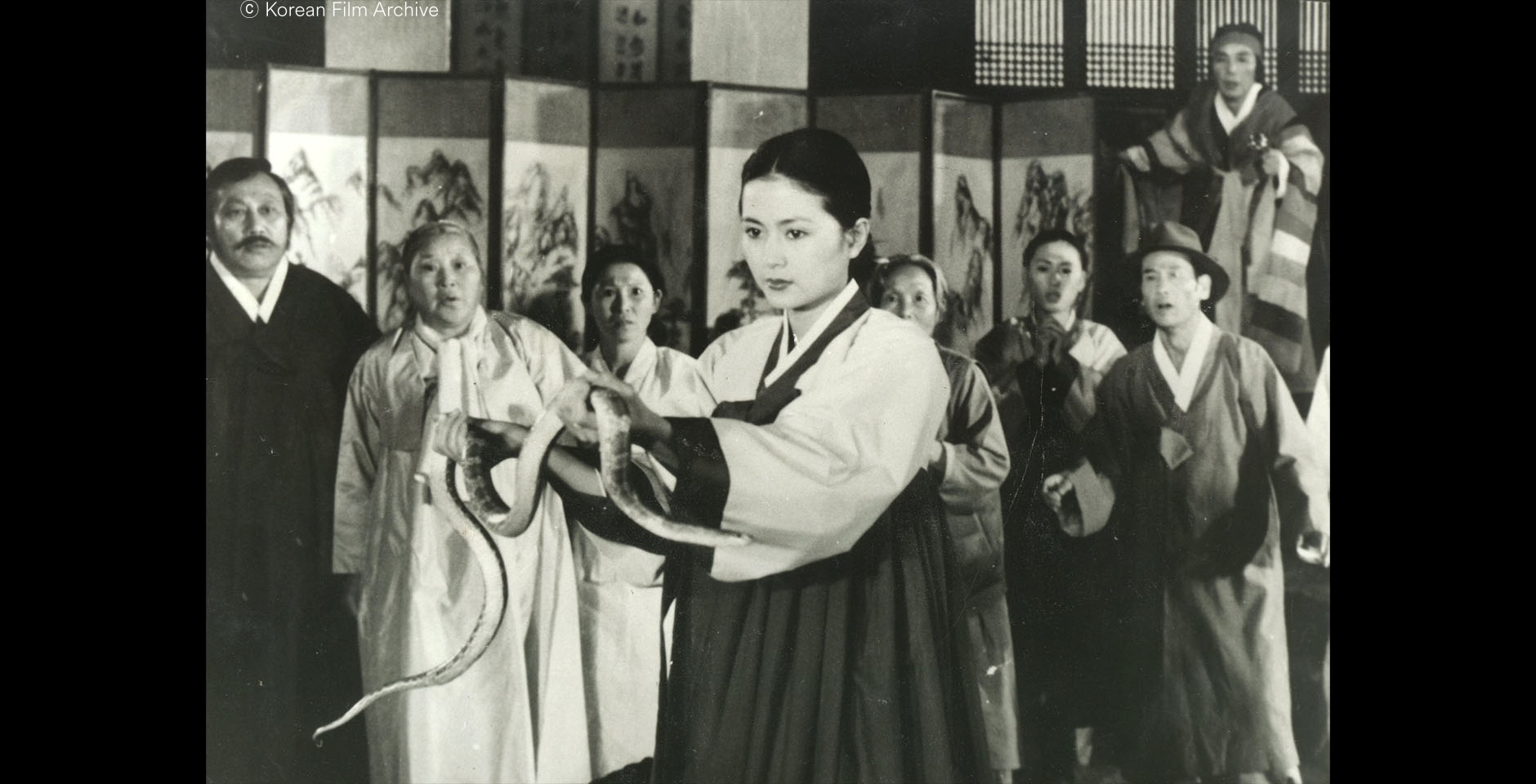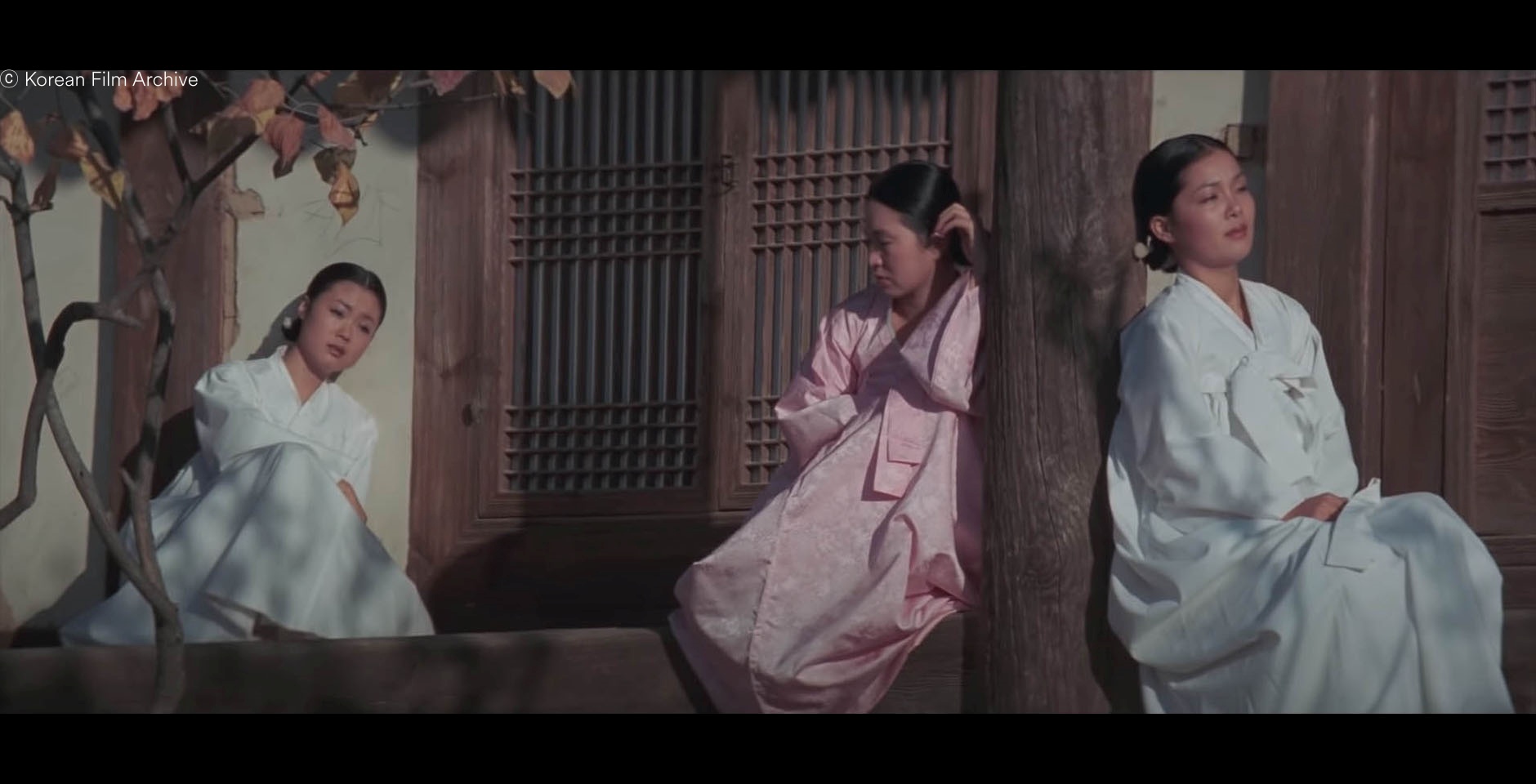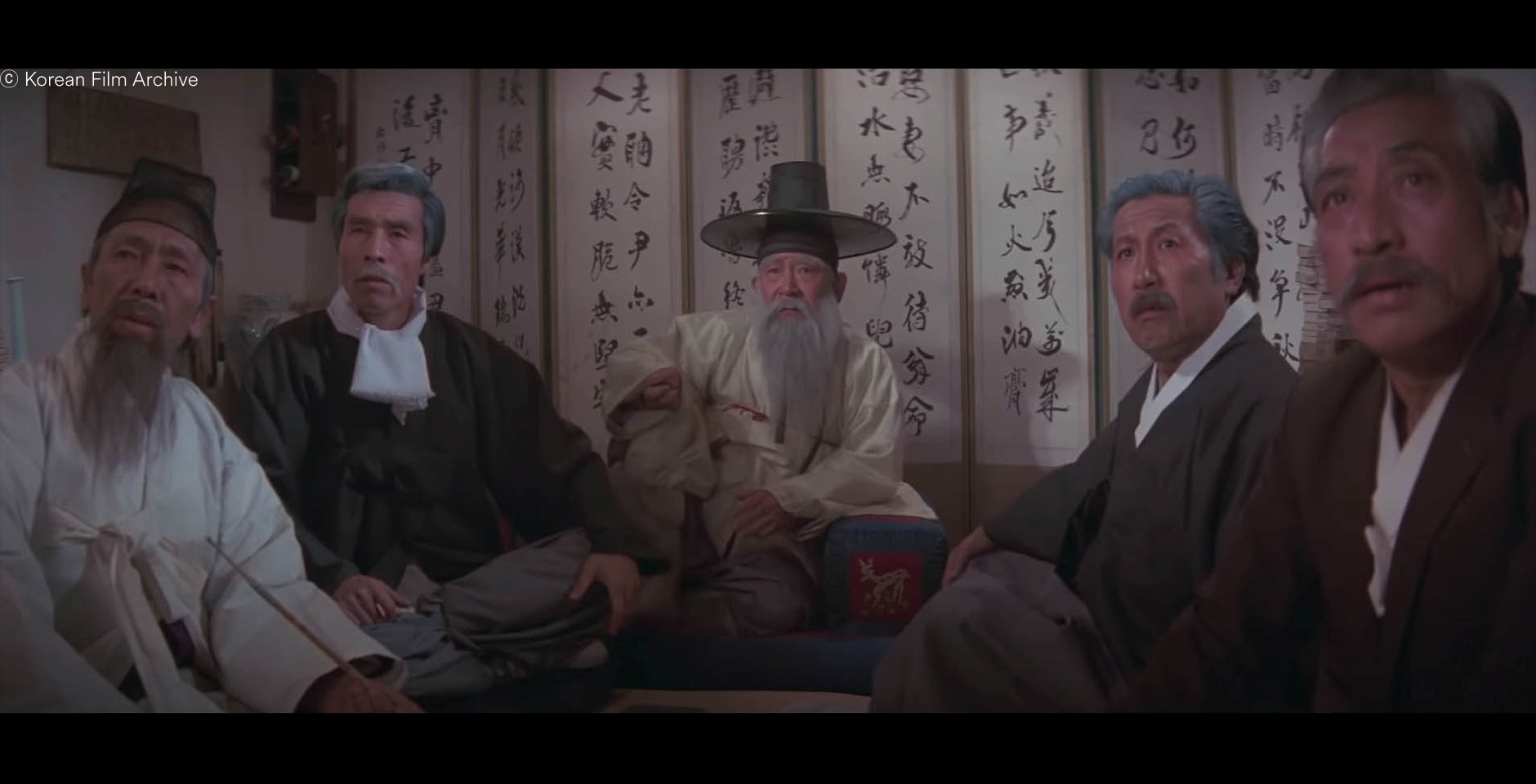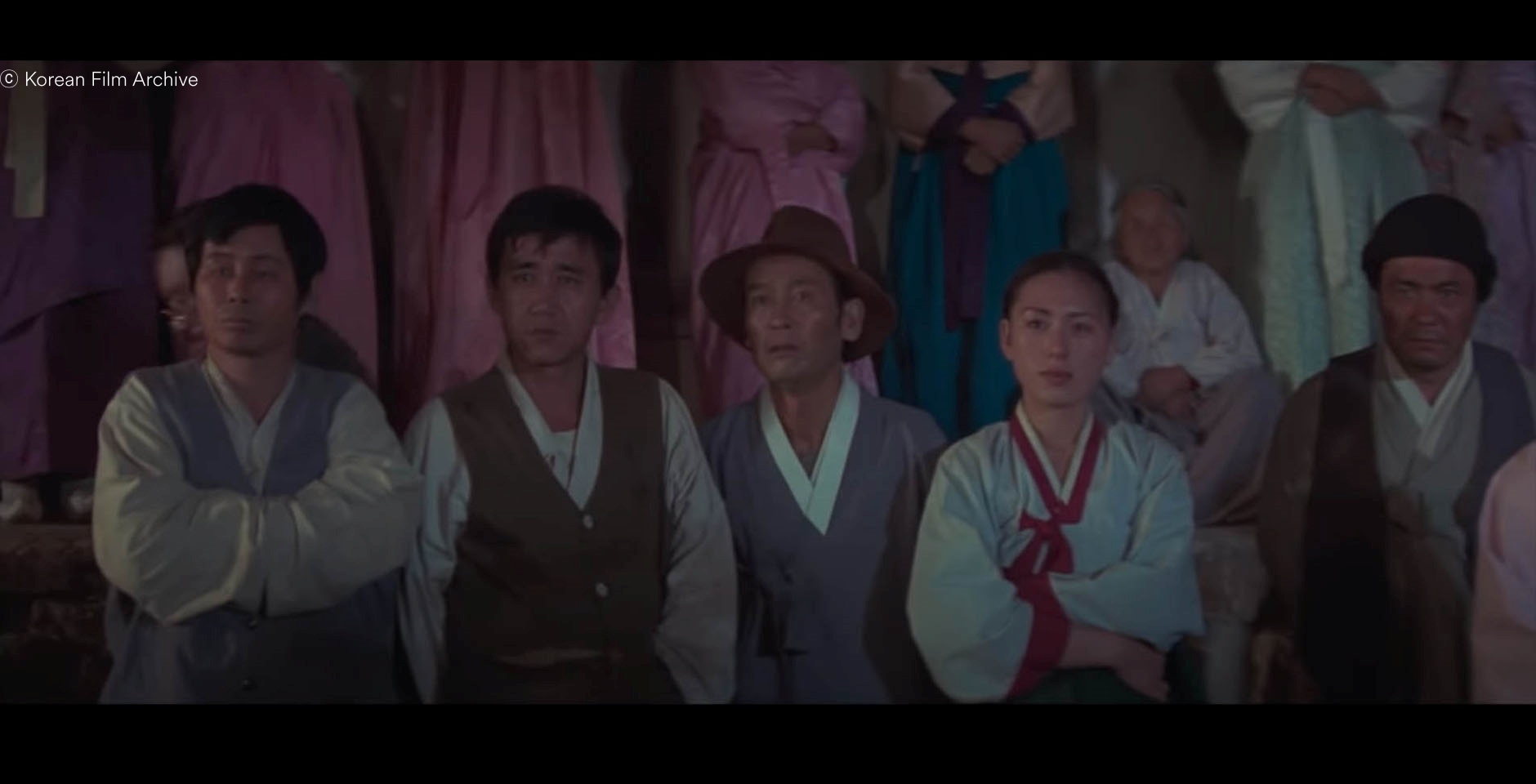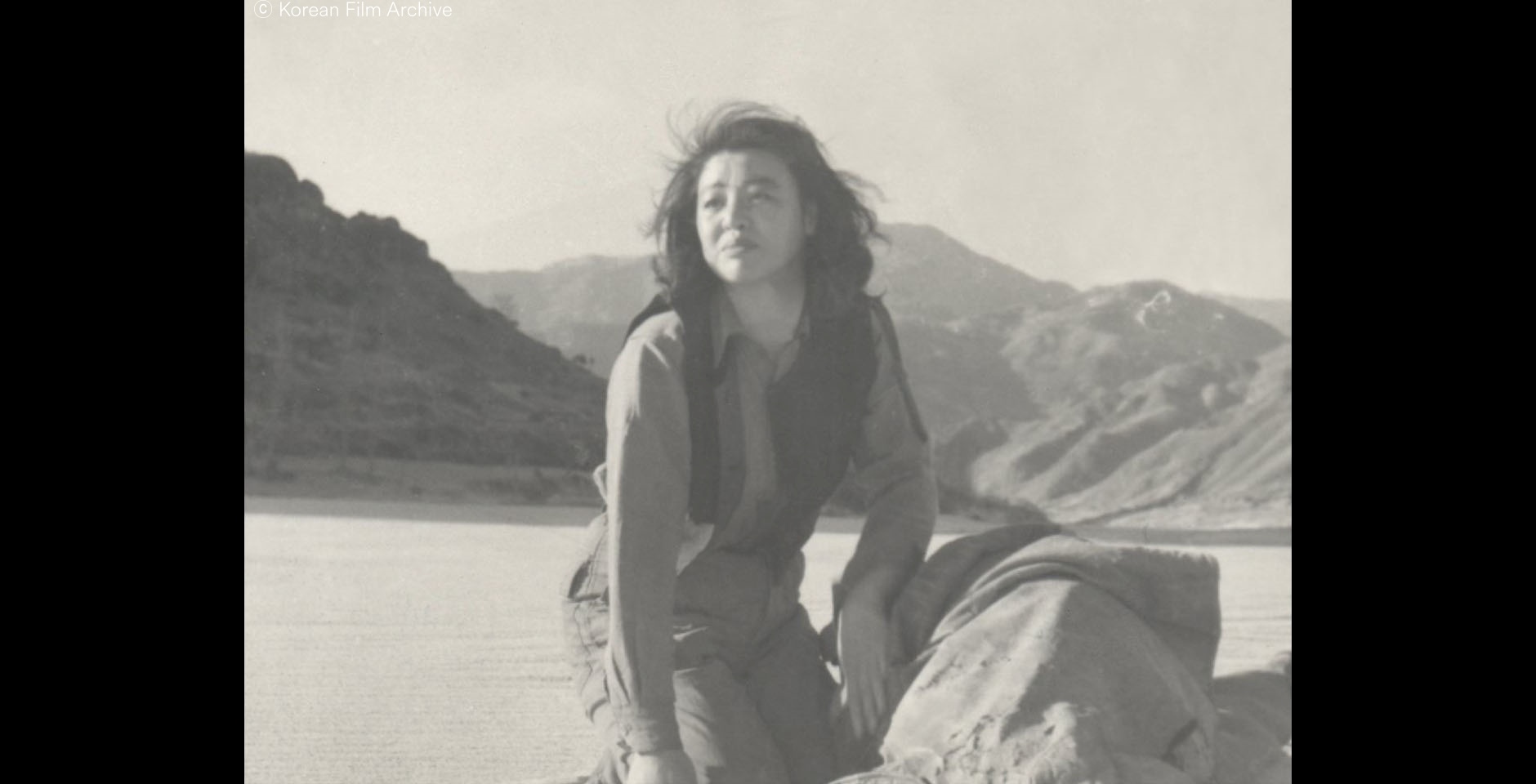The Hut
Schedule
Overview
When Master Jinsa’s oldest son Seongmin falls ill with an unknowable illness, he summons shamans from all over the country. Among them, a spiritual shaman named Okhwa finds a gourd-shaped bottle buried in the outskirts of town and proclaims that Seongmin has been possessed the vengeful spirit trapped inside the bottle. To this, the family members of Master Jinsa explain the last 20 years of family lore to Okhwa, and one by one, the blood-strewn secrets start coming to light.
* This work is licensed under Article 50 of the Copyright Act (Statutory License- 2024.3.27)
** Source: Korean Film Archive
Less -
Review
The Hut is a signature film of director Lee Dooyong, marking a thematic transition from his previous focus on action films to culturally rich narratives. Master Jinsa, concerned about his eldest son Seongmin's unknown illness, summons efficacious shamans from across the country to cure him through traditional Goot rituals. Okhwa, the most standout figure of all, discovers a gourd bottle, buried in a secluded part of the village. She reveals that the soul trapped in the bottle has possessed Seongmin. Master Jinsa's household finally discloses the events concealed for two decades. Intertwining indigenous eroticism and mystery, The Hut depicts lives sacrificed by the pre-modern system, with the hut at the heart of the narrative, situated at the crossroads of life and death. Yet, it avoids a simplistic dichotomy between modernity and pre-modernity. At the end of the film, when Seongmin, who has recovered from his illness, attempts to explain mysterious phenomena scientifically, the film juxtaposes scientifically inexplicable events like the unspoiled corpse of Samdol through cross-cutting, maintaining impartiality to both modernity and pre-modernity. The film won a special award at the 38th Venice International Film Festival. Following this, Lee Dooyong’s Spinning the Tales of Cruelty Towards Women (1983) was invited to the Cannes Film Festival, establishing his works as guiding lights for Korean cinema in the global film landscape during the 1980s. (PARK Seho)
Less -
Credit
- DirectorLEE Dooyong
- ProducerKIM Hwa-sik
- ScreenplayYOON Sam-yook
- CinematographySON Hyeon-chae
- GafferCHA Jung-nam
- Production DesignKIM Yu-jun
- MusicKIM Hee-kap
- EditorLEE Gyeong-ja
- SoundHanyang Studio, KIM Seong-chan
- CastYU Ji-in, NAMKOONG Won, HWANG Jung-sun, CHOI Seong-ho
Film Source
Korean Film Archive⎜program@koreafilm.or.kr
Director
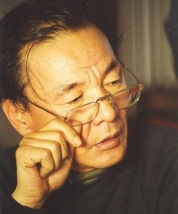
LEE Dooyong
